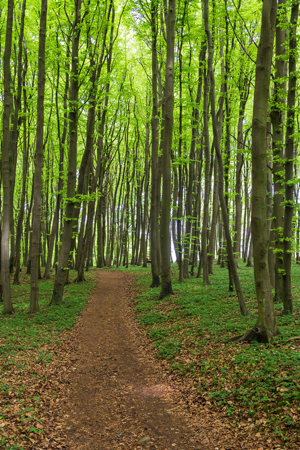
Parents want their children to grow into healthy, happy adults. But a recent study shows they may be missing out on a powerful ingredient to help make that happen: Plenty of unstructured time in nature.
A recent Danish study showed that the more time kids spend in nature the more likely they are to be happy as adults.
This wasn’t a small study of a few subjects. These scientists had a point to make and made sure they did it right — they followed one million subjects over 28 years.
They accounted for and controlled other factors that influence happiness when looking at the data, such as familial mental health, education, and socioeconomic status. Yet even after factoring in those considerations when looking at the data, they still found a staggering 55 percent lower rate of mental health issues in adults who grew up surrounded by nature. This is significantly more effective than what any pharmaceutical drugs can do.
To verify the data, researchers used satellite images of the subjects’ hometowns.
Many studies link improved mental health with nature
Although it’s the largest and most comprehensive study of its kind, it’s far from the only one. Plenty of previous research has demonstrated the mental health benefits of ample exposure to nature.
With more than 50 percent of the world’s population living in urban areas, and with that number projected to increase to 70 percent, studies like this are important so that green areas are incorporated into cities and suburbs.
Here are some ways nature has been shown to improve mental health:
Improves creativity. Studies have shown spending time in nature improves cognition and complex working memory span and reduces anxiety and rumination.
Lowers depression. A 2012 study had subjects with major depression disorder take long walks. One group walked in nature and one group walked in an urban environment. Those who walked in nature exhibited better memory and mood.
Reduces anxiety. While regular exercise improves mood and brain health, exercising in nature has been shown to be most effective in lowering anxiety.
Buffers stress for children and the elderly. Children and the elderly are more vulnerable to the stresses of urban environments. Cities that incorporate parks, playgrounds, and gardens can help mitigate stress for both these groups. Additional studies have found access to green spaces improves quality of life for seniors.
Gardening lowers stress hormones. A 2011 study found gardening lowers stress hormones and improves mood.
Heart healthy. Walks in nature lower stress hormones and blood pressure and help relieve anxiety, nature, fatigue, and confusion studies have found. These all translate to an internal environment that is more heart healthy.
Feel healthier. A 2006 study found that urban environments that included plenty of green spaces made locals think of themselves as healthier.
Quicker recovery. If you’re sick or injured, you’ll recover faster with a view of nature. One study showed hospital patients with a view of trees recovered faster than those with a view of a brick wall.
Good for women. Studies have also shown nature helps women’s health by alleviating stress and anxiety and by promoting a clear and healthy emotional perspective that feels reassuring.
Why our brains respond to nature
It’s common sense that we feel happier in nature. Urban life is very new within the time span of human history. However, scientists have theorized that we feel and function better in nature for several possible reasons:
- Evolution has built a positive natural response to nature into us a survival strategy.
- Nature enhances brain function by making us pay attention more consciously to cognitive tasks.
- Being in nature exposes us to bacteria in the soil that promote the release of serotonin, our natural “anti-depressant” brain chemicals.
Functional neurology can help you improve and restore your brain function so that you feel more naturally inclined and motivated to get out into a natural environment more regularly. Also, consider the mental health benefits of creating your own nature with a garden, potted plants, and hanging plants.


Latest from the Blog
The Death of Red Dye #3
January 15, 2025What Is Red Dye No. 3? Red Dye No. 3, or Erythrosine, is a synthetic food color derived from coal tar. It was first approved by the FDA in the 1950s and quickly became one of the most popular artificial colors in food and cosmetics. Red Dye No. 3 was used in everything from candies, […] Read more
Latest from the Blog
Do You Know What Is In Your Protein Powder?
What’s Really in Your Protein Powder? Understanding the Risks Protein powders are a staple in many health-conscious diets, from athletes seeking muscle recovery to those simply aiming to boost their daily protein intake. With a wide variety of options available, choosing the right one can feel overwhelming. However, recent findings have raised concerns about what’s […] Read more